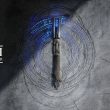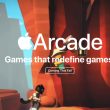What Exactly Is Driveclub?
Most of the headlines surrounding Driveclub have had to do with the scaled-down version PlayStation Plus owners can get for free, or the delay that pushed this PlayStation 4 racer back from its initial release date last November. But what exactly is Driveclub? To be honest, I didn't know too much about it going into a PlayStation pre-E3 event last week, but after spending just under an hour tinkering around with its many tracks and customization options, I've definitely learned a few new things about it.
It sits in the middle of the arcade-simulation spectrum
The most important part of any racing game is the way its cars feel, so let's get this out of the way first: Driveclub is neither an arcade nor a simulation racer. It occupies a middle ground between those two spectrums, with licensed cars that feel weighty and capable of understeering into a hillside if you fail to anticipate a corner in time, but that are forgiving enough that you don't need to be too delicate about your tires' relationship with the asphalt below them.
The audio goes a long way toward selling the realism of these vehicles, with punchy squeals and throaty engines providing an exciting soundtrack to your exploits on the road. I didn't get to spend enough time with the game to decide how well the whole driving experience comes together, however, but my initial reaction suggests that it feels pretty solid. There doesn't seem to be a huge amount of nuance between vehicles--I would have expected the Ariel Atom to feel much more sprightly than the Ferrari F12berlinetta, for example--but that's a gut reaction that comes from a single race spent with each car. Hopefully I can form a more developed opinion at E3.
Its beauty lies more in environments than vehicles

Do a side-by-side comparison of the visual detail between the cars found in Driveclub and those found in Forza 5, and it's no contest; Driveclub just doesn't stack up. But where Driveclub claims the upper hand is in the visual splendor of its many varied environments.
Driveclub forgoes urban and raceway tracks in favor of natural beauty. There are the fjords of Norway, the rocky shorelines of the Scottish coast, and the lush foliage of remote Indian hillsides--just to name a few. Each of these tracks provides a sweeping view of its respective locale, with a dynamic lighting model that makes each crested hill and sweeping turn feel as though you're peeling away toward the great unknown. These are some pretty gorgeous tracks.
Those tracks are pretty customizable
One of the cool tricks that Driveclub employs is the ability to customize the way time passes during races. You can do a one-lap race in the mountains of Chile where the time of day moves at an exponential rate, going from pitch-black 3 a.m. darkness to a dramatic sunrise to full daylight before the race is over.

But you can also set up a marathon race where you're spending a huge chunk of time cruising through the evergreen forests of British Columbia, with the day passing in real time as you slowly progress toward the end of the event. There's a pretty granular level of detail to choose from: the time of day a race starts, various levels of gloominess to the sky, and so on. It's mostly cosmetic, but it's a neat touch.
You're constantly competing with friends
One of the things you first notice when taking a spin through Driveclub is the sheer frequency with which challenges are thrown your way. You might be approaching a sweeping curve on one of those India tracks when a prompt tells you that you've got an opportunity to beat your friend Steve's best drifting score on that bit of the track. (Classic Steve--always hitting the hand brake when he should be downshifting.) Before that race is complete, you might also be asked to beat another friend's top average speed within a certain portion of the race, or some other specific objective on a very isolated portion of the track. This is a game that wants you to have a big friends list, because it's always putting your skills up against those of your buddies.

But it's not just about giving you challenges; you can craft your own as well. At any point in your Driveclub career, you can return to your entire back catalog of races to search for an impressive time on a particular track. If you see one you like, you can send that out as a challenge to a selection of friends. You can also create your own challenges using the aforementioned time-of-day settings. So let's say Steve sucks at night driving. (Steve suffers from a crippling fear of headlights, but he'd never tell you that.) You can set up a sprint through the Chilean mountains in the dead of night, choosing cloudy conditions to block out the moonlight, and see how well he matches your time in such a challenging scenario.
Much less scary is Driveclub's multiplayer system, which employs a clever bit of matchmaking trickery. Let's say all your friends are busy right now with some odd race or what have you. You can all party up while continuing to go about your own tasks. Then one of you can pull up the multiplayer screen, where matches are scheduled ahead of time at various intervals. You select a match starting in 30 minutes, then spend some time tooling around with your custom livery designs, and before you know it, you and all your friends get a prompt telling you the match is ready to go.
It's little details like this that seem to make Driveclub stand out. I'm still not sure whether those touches can add up to a special game, but I'll certainly be checking out more of it at E3 to find out. Stay tuned for more.









